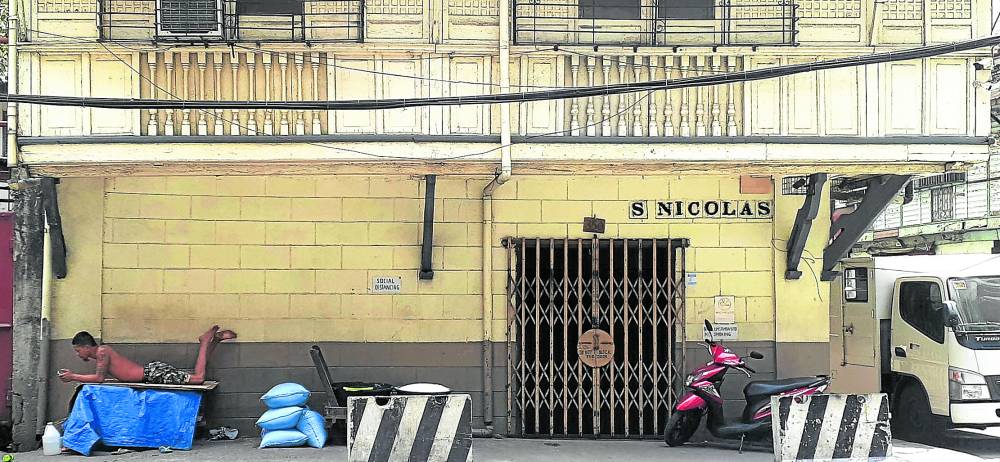
Instituto Cervantes de Manila recently launched an initiative, “Save San Nicolas,” whose objective is to avoid the disappearance of the last surviving architectural vestiges of the 19th century in Metro Manila.
A panel discussion, which took place in Instituto Cervantes’ branch in Intramuros last May 26, was the first activity held to bring the issue to light. The guest speakers were anthropologist Fernando Zialcita and architects Lorelei de Viana and Michael Manalo.
The objective was to create consciousness about the problem, to be followed by an invitation to all the individuals, organizations and institutions that could do something to avoid the total disappearance of these architectural treasures, whose conservation and interpretation help us to better understand important aspects of Philippine society.
The formation of our own identity is a dynamic process. “A process of becoming,” in the words of Nick Joaquin. Spanish and Chinese factors played a major role in the formation of the contemporary Filipino identity. The economic viability of the Philippines as a territory of the Spanish monarchy had always been linked to Chinese labor.
Historians have highlighted this fact, but it was probably not given enough consideration and value, which would have aided in better understanding the history and creation of the Filipino identity, and would have supported strategies in developing beneficial actions and projects.
I already gave some hints concerning the relation between the Chinese pagodas of the 16th century and the Philippine bell towers. Art historian Pedro Luengo initiated research in this field, providing pieces of evidence for this claim.
First Chinatown in history
This interaction between Spanish and Chinese influences is especially evident in the northern bank of the Pasig river where Binondo, the first Chinatown in history can be found. As the French literary figure Victor Hugo said, buildings constitute the pages of the great book of history. And the oldest of these can be found in Binondo, or more specifically in the barrio of San Nicolas, a part of it which was administratively detached from Binondo.
The focus has been put on Intramuros, logically, for many years. But in Intramuros, only one historical edifice remains: San Agustin church is the oldest and most venerable in the entire archipelago. The walls of Intramuros also remain, part of which have been reconstructed. Everything else is “new”—reconstructed (to a great degree) after World War II.
However, in San Nicolas, original old structures constructed in the 19th century remain. Some of them are more than 150 years old. These are the last remnants of a civilization. Few people know about it and even fewer value it.
The “Save San Nicolas” movement brings forth the San Nicolas Workshop, the objective of which is to carry out actions such as the cataloging of historical buildings, the systematic gathering of available information in the archives, the introduction of cultural initiatives for the neighborhood, the opening of tourist circuits and the legal protection of structures older than 50 years. —CONTRIBUTED
The author is the director of Instituto Cervantes de Manila.








































